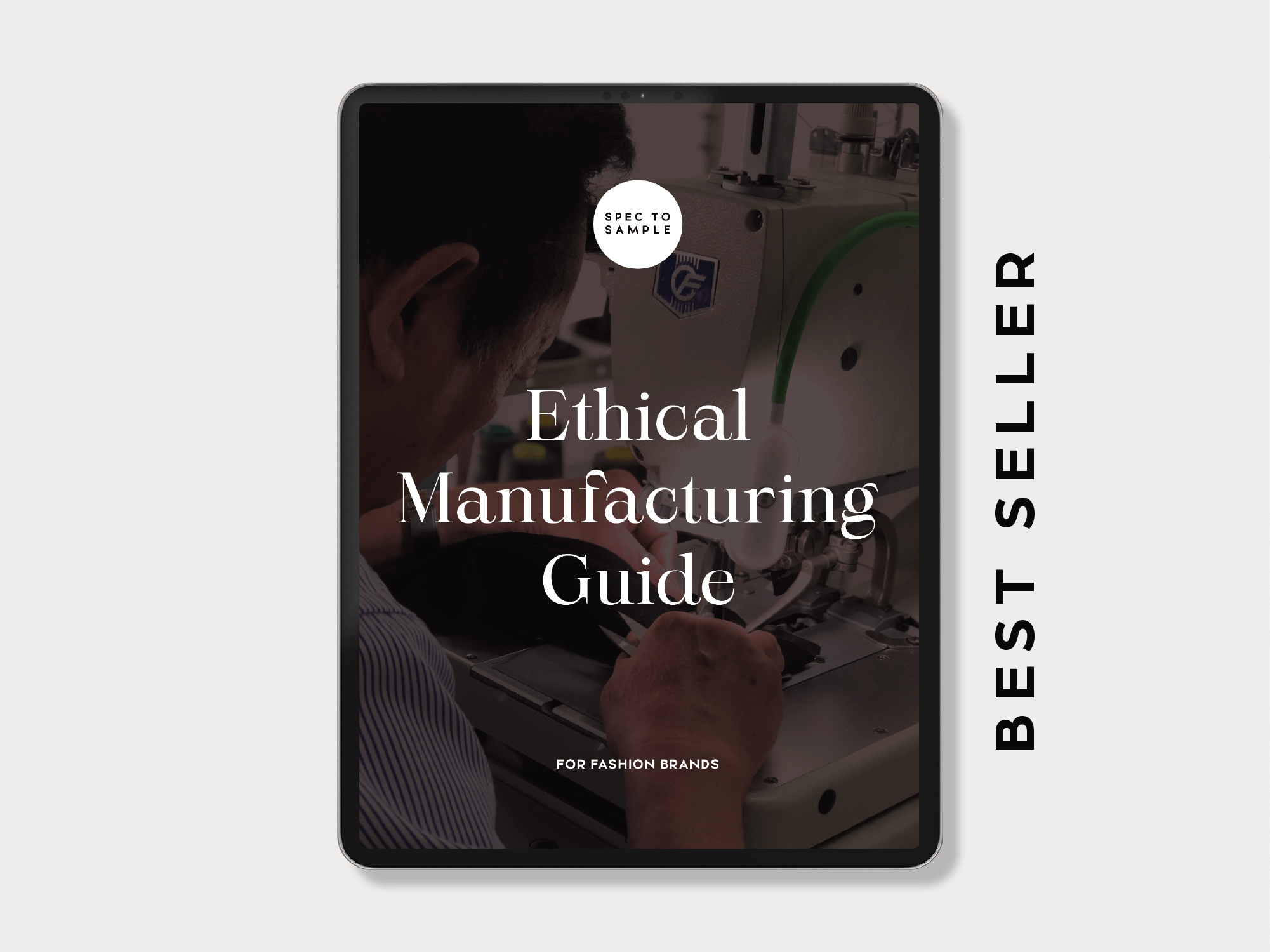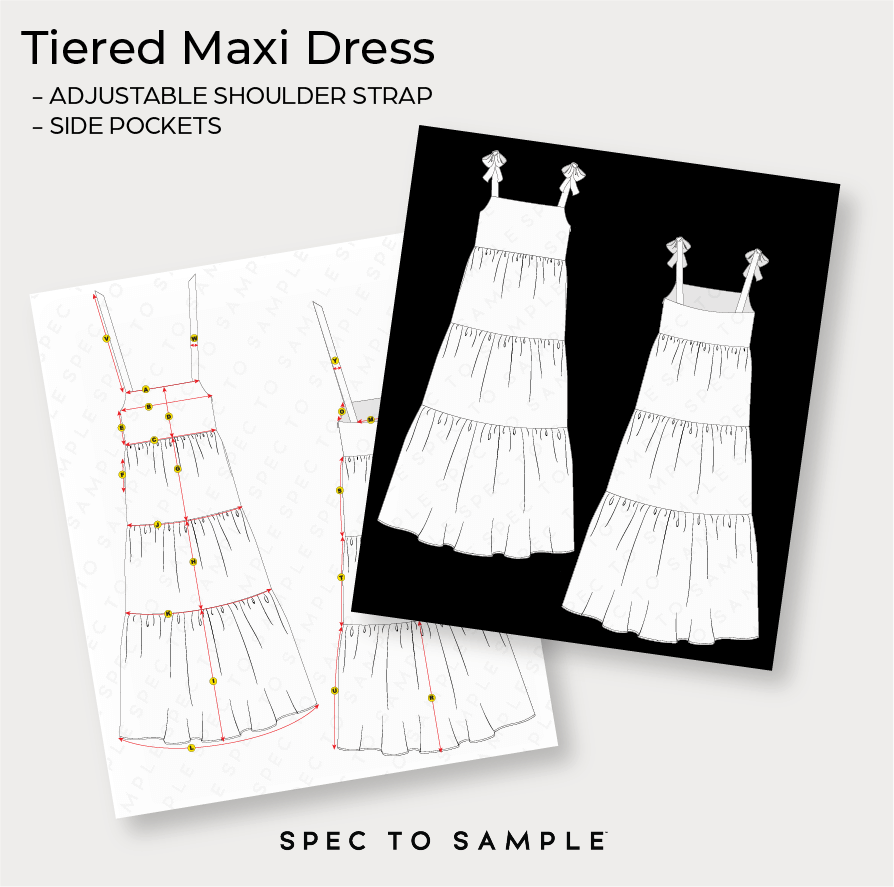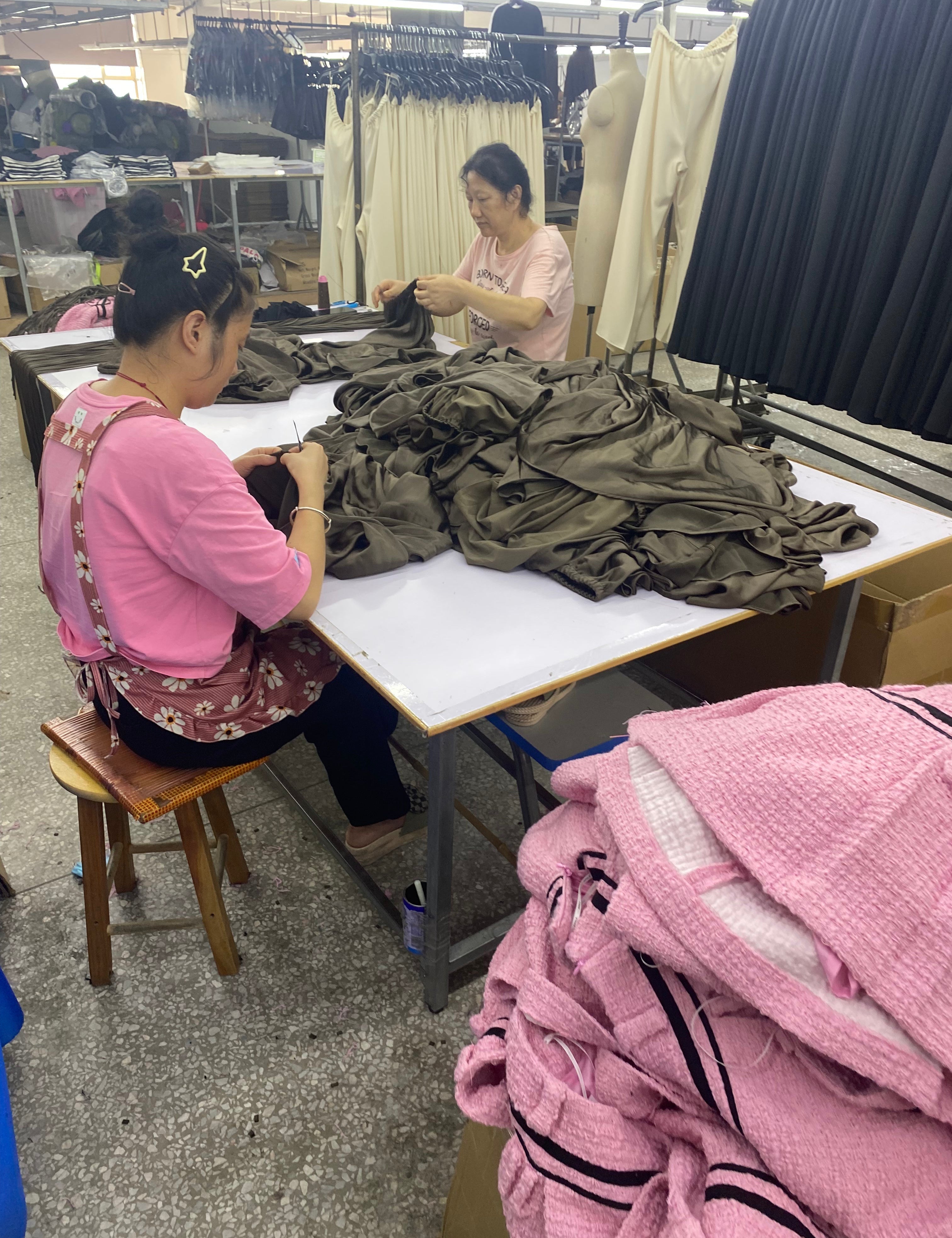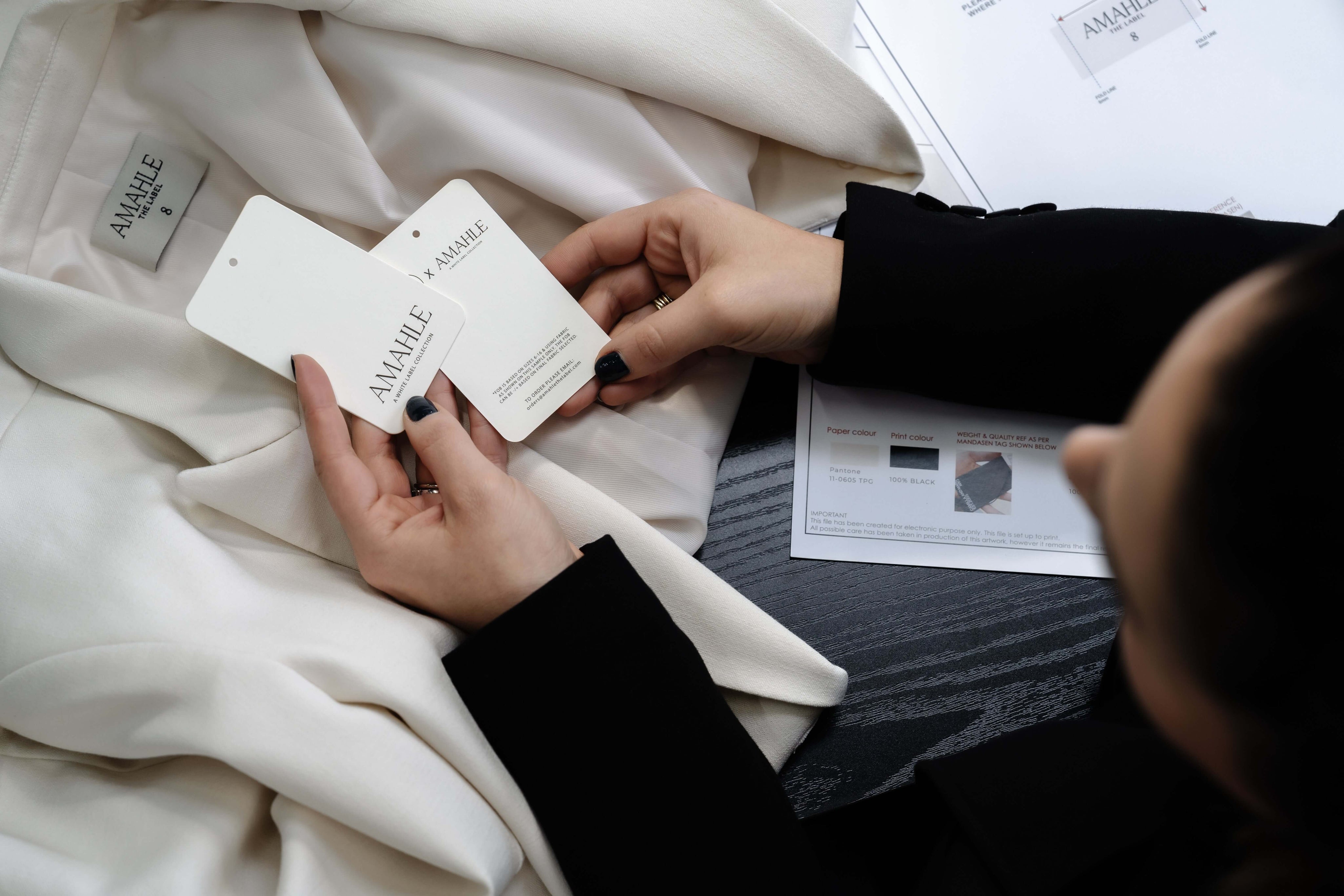How Long Does It Take to Develop a Fashion Brand?
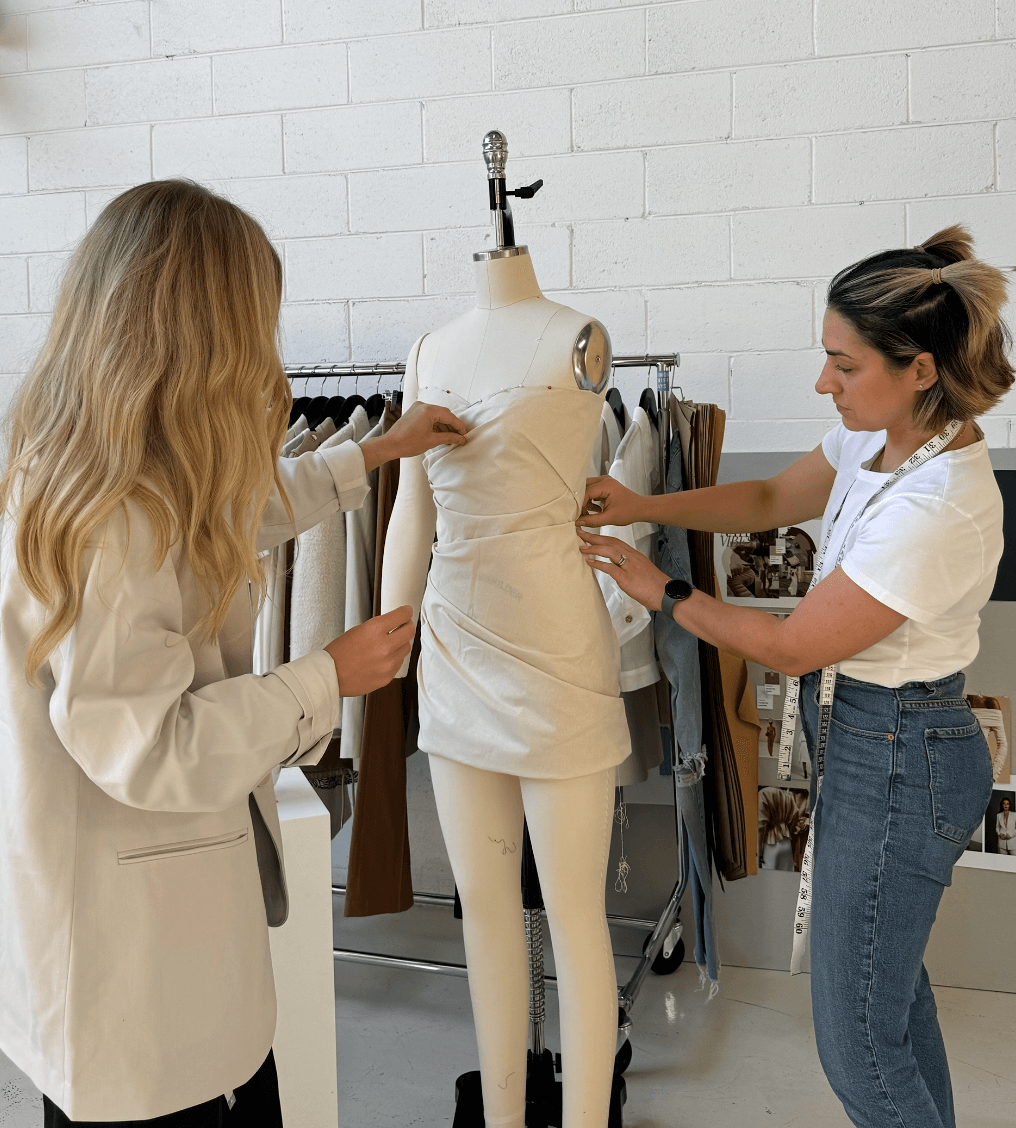
An Insight into the Early Stages Launching a fashion brand is no small feat—it's a complex process that blends creativity with strategic planning. Trust us, that’s from our own experience. We’ve already taken you on an overview on how to start a fashion brand.
The initial phases of brand development lay the foundation for everything that follows. From conceptualizing your brand to finalizing the designs, each step is pivotal and sets the tone for the brand's future. This “quick” guide will walk you through the stages of fashion design, product design, and product development, providing a clear roadmap for what you can expect plus timeline estimates.
Please note that this timeline is just an estimate. You can develop your fashion brand faster or slower depending on your needs and how fast you work. Use this as a benchmark and not a yardstick to measure your progress!

Stage 1: Conceptualisation and Planning (1-2 Months)
The genesis of a fashion brand starts with an idea. However, transforming this idea into a viable business concept involves rigorous market research and strategic planning. This stage sets you up by defining the brand's identity, understanding the competitive landscape, and identifying the target audience. It’s time to create your business plan! If you set up your company right the first time, you’re going to have an easier and smoother transition to the next steps. You as an aspiring fashion entrepreneur must analyse current market trends, assess the competition, and pinpoint a niche that offers potential for growth and resonates with their vision.
Your business plan should articulate your brand's values, aesthetic direction, and unique selling propositions. It also needs to outline key business goals, strategies for achieving them, and preliminary financial projections. This plan will guide your brand's strategic decisions and also attract potential investors or partners.
Stage 2: Design Phase (1-3 Months)
With a clear brand concept in place, the next step is to start your actual product design. This phase is where the creative vision begins to take a tangible form. Designers start with sketches, experimenting with various styles and silhouettes that embody the brand’s aesthetic. It's a creative process that often involves going back to the drawing board multiple times to refine ideas until they align perfectly with the brand’s identity.
Material selection plays a critical role at this stage. The choice of fabrics and other materials should align with your brand’s quality standards and ethical practices. For instance, a brand focusing on sustainability will prioritise eco-friendly or recycled materials. This decision significantly affects not only your final product's look and feel but also its appeal to the target market.
The culmination of the design phase is the completion of detailed final designs ready for prototyping. These designs will include technical specifications or “tech packs” for manufacturing, such as dimensions, materials, and special instructions, which are pivotal for the next stage of development.
Stage 3: Sourcing Materials and Vendors (1-6 Months)
The transition from design to production begins with sourcing the right materials and establishing relationships with vendors. This stage can be quite variable in duration, depending largely on the specificity of the materials and the logistics of supplier locations. Designers must source high-quality fabrics that meet their aesthetic and functional requirements but also adhere to their brand’s ethical standards.
Selecting the right vendors is equally important. This includes looking for fabric suppliers, manufacturers, and other key service providers. The criteria for selecting vendors extend beyond cost and quality; their ability to deliver on time, their reputation in the market, and their practices in terms of labour and sustainability are also crucial considerations. Building strong relationships with reliable vendors is fundamental to ensuring smooth production cycles in the future. Your output is always dependent on your input.
What happens if you don’t know where to look? If you want to save on time and even money, hiring experts is your most viable option.
Traversing the Core Phases of Fashion Brand Development: From Prototyping to Production Planning
Once a fashion brand has its designs and materials ready, the journey moves forward into some of the most hands-on phases: sampling and prototyping, production planning, and finally, the manufacturing process itself. These stages transform conceptual designs into physical products ready for the market. Understanding and effectively managing these phases can significantly influence the brand's ability to meet its launch deadlines and quality standards.

Stage 4: Sampling and Prototyping (2-6 Months)
The transition from design to tangible product begins with sampling and prototyping. This is where the theoretical aspects of design and material selection are tested in the real world. The initial prototype, often referred to as a first sample, is created based on the final designs. In our opinion, it’s the most exciting part. What do you think?
Prototyping is inherently an iterative process and can take a lot of time. It involves multiple rounds of adjustments based on the feedback from these initial samples. Don’t be frustrated if it’s not perfect on the first try. It’s normal to have to redesign a thing or two. Each sample should be meticulously reviewed for aesthetics, functionality, and fit. Adjustments are often necessary as the product may not yet fully align with the envisioned specifications or may reveal unforeseen practical challenges. This could involve altering dimensions, modifying materials, or even revisiting certain design elements to ensure the final product is both manufacturable and aligns with the brand’s standards.
Fittings are a vital part of this phase, where the product is tested on models to evaluate its fit and overall look. These sessions can lead to further tweaks to the prototype, ensuring that each piece meets the brand’s defined criteria for size, comfort, and style. If you’re a slave of perfection, can you see how long the process might take especially if it’s your first time doing it?
Once the samples meet all specifications and receive final approval, the brand moves towards the larger-scale production planning.
Stage 5: Production Planning (1-2 Months)
With a successful prototype in hand, the next step is production planning. This stage is about preparing for the manufacturing process in a way that maximises efficiency and ensures quality. It involves detailed scheduling of all production activities to avoid any potential delays and to streamline the entire process.
Production planning also includes setting up quality control systems. Quality control helps standardise final products. This system involves regular checks at various stages of your production process to ensure that every product meets the brand’s predefined quality criteria. It helps in identifying issues early in the production cycle, saving time and reducing waste.
Logistics planning is another critical component of this phase. It covers the organisation of the supply chain, ensuring that all materials required for production are available when needed. This includes coordinating with suppliers and vendors to confirm delivery schedules and quantities, arranging storage facilities for materials and finished goods, and setting up transportation for delivering products to distribution centres or directly to customers.
A logistics nightmare can happen especially if you don’t have access to reliable partners in your supply chain. We have extensive spreadsheets of our trusted contacts with detailed timelines for production and delivery.
Stage 6: Manufacturing (2-6 Months)
Finally, the brand reaches the manufacturing stage, where the designs are produced in bulk. This phase can vary greatly in duration depending on the complexity of the product, the number of units being produced, and the efficiency of the manufacturing facilities. Manufacturing starts with a small-scale production run, which serves multiple purposes. It tests the efficiency of the production process, provides an initial stock for early market testing, and helps identify any further improvements needed before full-scale production. This is also the stage where the final adjustments can be made to ensure the product is exactly as desired before larger quantities are produced.
Once the small-scale run is evaluated and any necessary adjustments are made, the production is scaled up. This is where the bulk of the inventory is produced, ready for launch. Throughout this stage, ongoing quality control measures are crucial. These ensure that every batch of products remains consistent with the sample that was approved during the prototyping phase.
Beyond Just Creating Your Fashion Brand
After a successful launch, the real work begins to sustain and grow the fashion brand. The focus now shifts towards deepening customer relationships, expanding the brand's reach through strategic marketing, and optimising business operations. These ongoing efforts are crucial for long-term success and involve several key stages that require constant attention and adaptation.
Stage 7: Branding (Always)
Creating and refining a fashion brand is an ongoing process that extends well beyond the initial launch. Your brand must evolve in response to market trends, customer feedback, and the competitive landscape. This stage involves continual development of your brand’s identity, including its personality, voice, and visual elements.
Effective branding is not just about aesthetics; it’s also about resonating with customers on an emotional level. Regularly updating your brand's story to include customer experiences and feedback can enhance its relevance and appeal. Additionally, evolving the brand's visual components, such as its website and marketing materials, ensures that it remains fresh and engaging.
Stage 8: Customer Engagement and Profiling (Always)
Understanding and engaging with your target customer is a must for continuous success for your fashion brand. Customer service doesn’t end after selling the product. It’s an ongoing process. This stage involves detailed analysis of customer data and behaviour to refine the customer profile continually. You must gather and analyse data from sales, social media interactions, and customer feedback to understand better who your customers are and what they desire.
Effective customer engagement also involves direct communication through various channels such as email marketing, social media, and personalised content. You want your brand to focus on building strong relationships by engaging customers with compelling, relevant, and timely content that encourages loyalty and increases brand affinity.
Stage 9: Marketing and Sales Expansion (Regularly Review After Each Season)
Post-launch marketing is critical to maintain visibility and attract new customers. This includes both digital and traditional marketing strategies tailored to the brand’s target audience. Utilising SEO, social media advertising, content marketing, and influencer collaborations can drive traffic and increase sales.
Sales strategies may also evolve as the brand grows. Exploring new sales channels, such as international markets or different online platforms, can expand your brand's reach. Additionally, optimising pricing strategies and promotional offers based on market demand and competitive analysis can significantly boost sales performance.
Stage 10: Streamlining Business Operations (Review Regularly)
As the brand develops, streamlining operations becomes essential to manage growth effectively. This includes automating processes where possible, such as inventory management, customer service, and order fulfilment. Investing in technology solutions can significantly reduce the workload and improve efficiency.
Hiring the right team is essential as the business expands. This may involve bringing in specialists for marketing, design, or operations. Building a team that shares the brand’s vision and has the necessary skills to execute its strategies is vital for sustained growth.
So, how long does it take to develop a fashion brand?
The answer is always, IT DEPENDS. Every fashion brand’s need is different. We’re just giving you an idea of the process to give you an idea how long it takes.

The journey of a fashion brand is continuous, with each stage building on the previous ones to sustain growth and adapt to changing market conditions. Post-launch, the focus must shift to deepening customer relationships, continuously engaging with the market through innovative marketing strategies, and optimising business operations to support growth. Some form of effort is always needed for a fashion brand to thrive in the competitive and ever-evolving fashion industry. Each step taken should be measured and reflective, ensuring that the brand not only survives but flourishes in the long term. We at Spec to Sample, are ready to mentor you along the way to make sure that your brand can launch as soon and as smoothly as it can.
How about booking a discovery call with us now? Click the button to explore your options!

